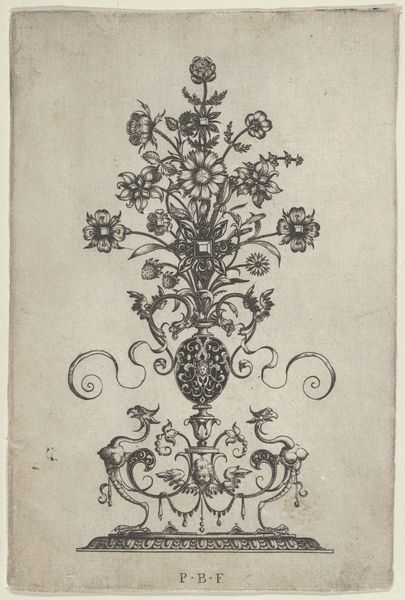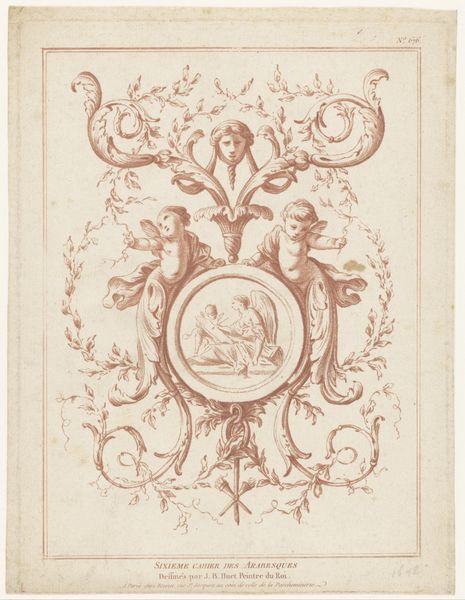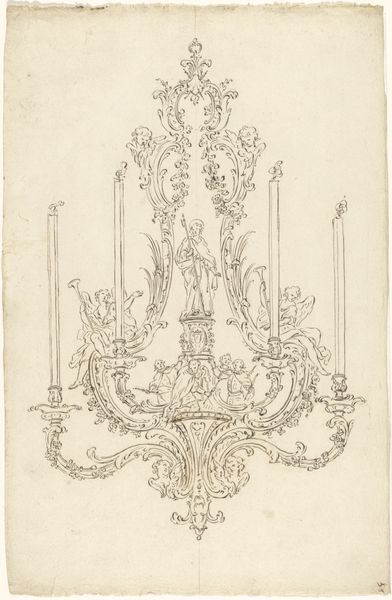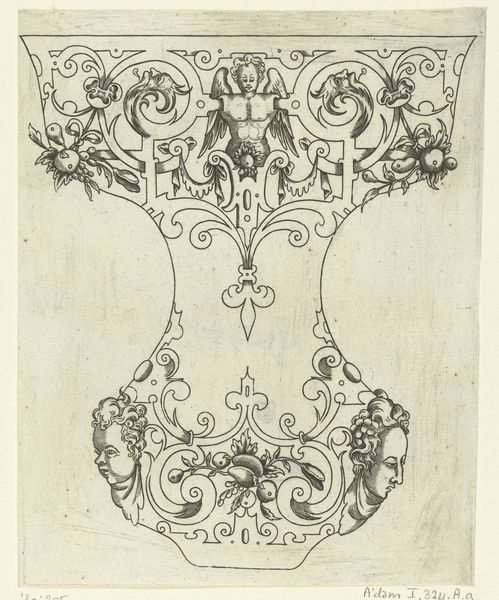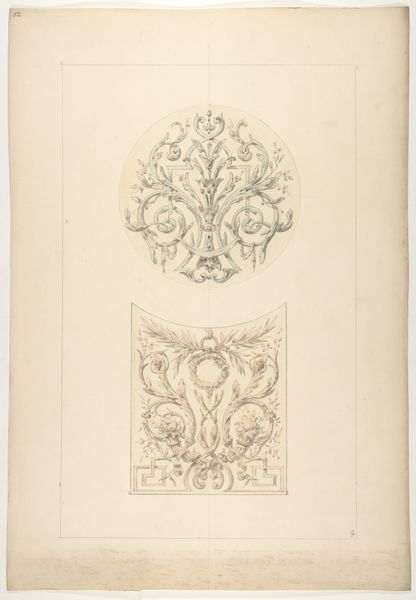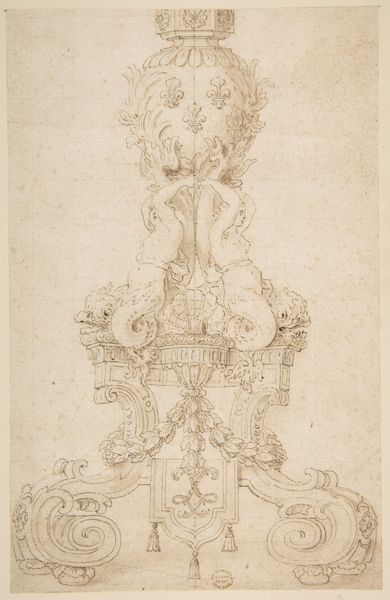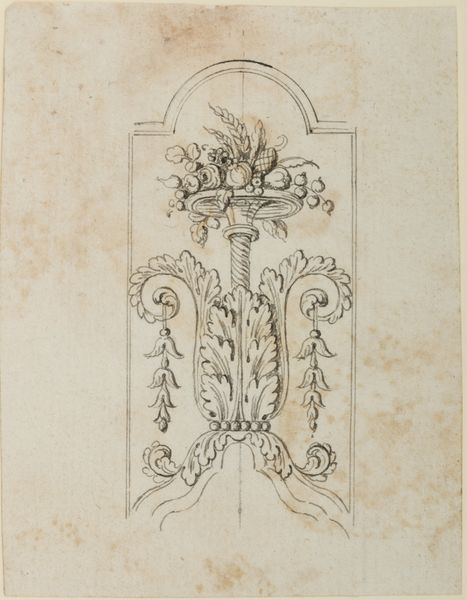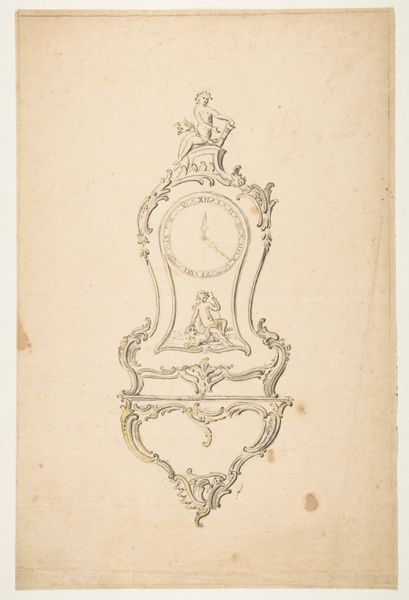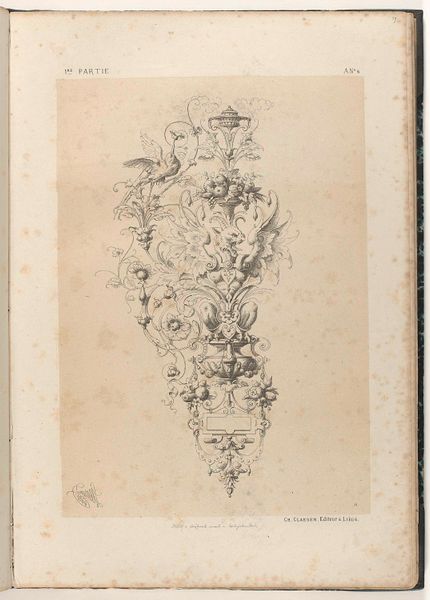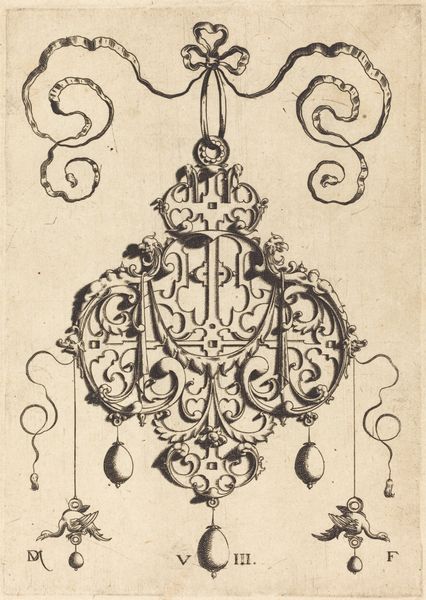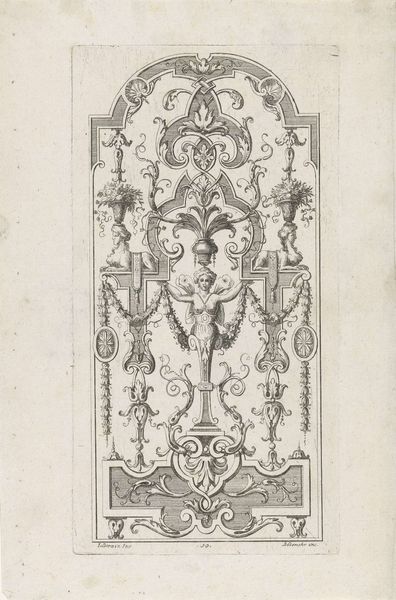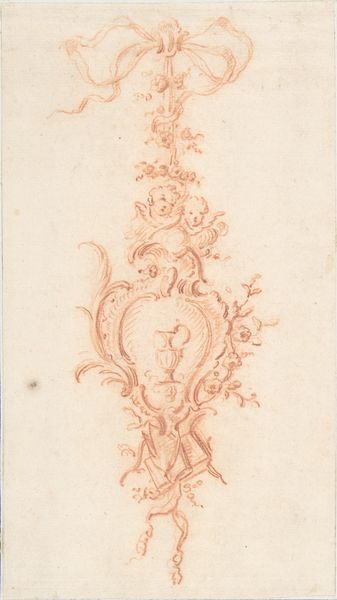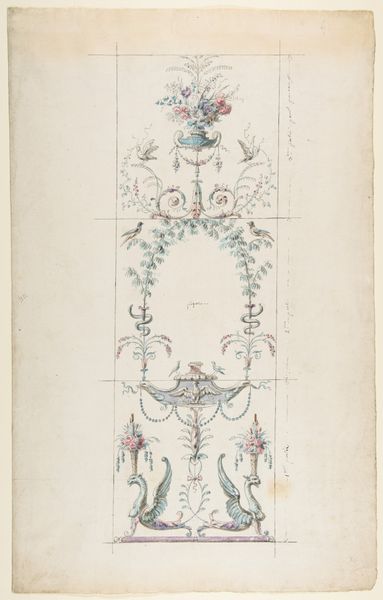
drawing, print
#
drawing
#
baroque
# print
Dimensions: 9 x 5 9/16 in. (22.9 x 14.1 cm.)
Copyright: Public Domain
Curator: A preliminary sketch can be incredibly evocative, can't it? My first thought is that the scale feels somehow monumental, even in this simple, linear form. Editor: This is René Charpentier’s “Design for Trophy,” likely created between 1695 and 1723, currently housed here at the Met. It gives us an intriguing insight into Baroque design sensibilities through the medium of drawing. Curator: "Trophy" suggests commemoration, and immediately my eye is drawn to the combination of religious and aristocratic symbols – the angels, the cross, the crown... The little structure within the cartouche reminds me of a reliquary, hinting at the preservation of sacred relics. Editor: Precisely. Note also the texture created by the red chalk. Each line conveys information about light and shadow, even at this preparatory stage, informing the artisans tasked with rendering these sketches into three-dimensional, opulent, material objects. Curator: And consider the intended psychological effect! Trophies inherently deal with power, victory. But what kind of victory are we talking about here? Is it earthly, or something more...spiritual? Perhaps even, both woven together, the visual rhetoric carefully planned. Editor: Given the time and context, the labor and the commerce certainly would be tied up in workshops supported by aristocratic patronage. Knowing how intertwined the social was with the ecclesiastical then really contextualizes the fusion of those symbols. A "divine right of kings," perhaps, visually codified through material processes? Curator: Indeed. It serves as a reminder that symbols aren't neutral. They are intentionally crafted, meticulously rendered, imbued with layered meaning that resonates even centuries later. The emotional heft of these forms persists, echoing the long, complicated dance between temporal authority and spiritual aspiration. Editor: So, even in what appears to be a preliminary drawing, we get a real glimpse into the economy and meaning constructed around object making then, and how even drawings act as significant nodes within these larger systems of cultural production. Curator: Yes, thank you, I hadn't quite seen it that way before, an initial manifestation and key part of these economic and artistic endeavors. Editor: Exactly, there is so much happening in plain sight.
Comments
No comments
Be the first to comment and join the conversation on the ultimate creative platform.
